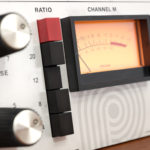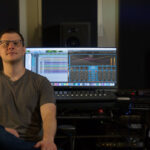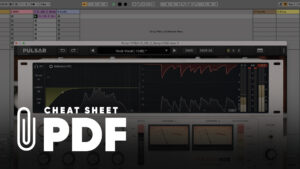The Best Analogue EQs of All Time, and How to Get Them in Software
- Posted on

‘Pultec’ EQP-1A
What makes passive EQ different from other EQ types?
The Pultec – alongside the Massive Passive, which we’ll cover later – is a passive EQ, which means its filtering is done by a mix of resistors, capacitors and inductors, a method that doesn’t require any power. However, when amplification is needed, passive EQs do make use of powered components: tube amplifiers. People generally think that it’s these tube amps bringing the signal back up that actually give passive EQs their beloved sound.

The Pultec Low-End Trick Explained
Legendary gear wouldn’t be so loved without an equally legendary trick. For the Pultec, it’s the ‘low-end trick’. This trick is performed by setting both a bass boost and a bass cut at the same time. Yes, the Pultec had two separate circuits for cut and boost, and they could be used together, although they weren’t intended to be.
Since the two shelves had slightly different corner frequencies, the result of the dual boost and cut lead to a boost with a complementary scoop (cut) just after it. It’s quite obvious to modern producers, and acts just like a low-shelf with a high Q value, but in the days before instant and easy frequency visualisation, it was a mindblowing way to boost bass without introducing muddy low mids.
Where to get your Pultec
The Pultec sound has been emulated in software form by a collection of developers. As with many production tools, you can pick up some basic free options if you’re on a budget, or you can drop a few hundred on more faithful recreations. IK Multimedia’s EQP-1A fits in somewhere in the middle of this spectrum, and adds mid/side processing into the feature list.
Other developers – such as OvertoneDSP – have also modelled the Pulse Techniques midrange MEQ-5 unit as well, should you want to open up more passive EQ bands in your tracks.
Neve 1073
The history of the 1073
The 1073 was born of one of Rupert’s many “experiments” as he tested new silicon-based transistors on various mixing consoles, and it was an instant hit. Most notably, the Neve A88 console featured 1073 preamps, and was a bespoke build for Wessex Sound Studios. The London studio was responsible for recording the likes of Sex Pistols, Rolling Stones, Queen and many more.
The transformers in the 1073 are said to be responsible for its sound quality. The preamps are capable of producing a rich, full and transparent sound when receiving an appropriate level. Equally, many loved the 1073 for the unique colouration it’s able to impart on a signal when pushed a bit hotter.

1073 plugins
Once again, we’re spoilt for choice when it comes to choosing a 1073 plugin emulation. Ultimately, it’s hard to top the legendary sound of an original unit, but as computers become more and more powerful, plugin developers are getting closer to the real deal.
Arturia is one such developer. Generally, their Pre 1973 plugin is in keeping with the simplistic controls of the original device, with the exception of a couple of additional features that bring it up to speed with contemporary software. An additional transformer type grants a little more flexibility in the sound of Pre 1973, and Mid/Side processing opens the plugin up to more advanced mixing and mastering tasks.
Manley Massive Passive
We mentioned the Pultec and its legendary passive EQ sound. The Manley Massive Passive takes the same sound but puts it into a selection of bands that feel a lot more conducive to modern workflow – try four bands from low to high, instead of two low bands (cut and boost at four possible frequencies) and another two high bands (cut and boost at seven possible frequencies).
Yep, the Massive Passive is a far simpler way to get the passive EQ sound and apply it to an entire channel or mix. It offered logical and continuous cut and boost amounts, and each band could be set as a bell or a shelf. We love it so much that we made our own!
Pulsar Massive
Our own Massive EQ software gets you the full passive EQ experience and sound but with added digital convenience. It’s also a parallel EQ for transparent and incredibly ‘pushable’ tones. You can program bands on the curve editor and get comprehensive visualisation of a signal’s frequency spectrum and levels. We’ve also built in a choice of transformer types as well as Drive control, so you can immerse yourself in the Passive EQ experience and sound quality.
Once again, we’re spoilt for choice when it comes to choosing a 1073 plugin emulation. Ultimately, it’s hard to top the legendary sound of an original unit, but as computers become more and more powerful, plugin developers are getting closer to the real deal.
Arturia is one such developer. Generally, their Pre 1973 plugin is in keeping with the simplistic controls of the original device, with the exception of a couple of additional features that bring it up to speed with contemporary software. An additional transformer type grants a little more flexibility in the sound of Pre 1973, and Mid/Side processing opens the plugin up to more advanced mixing and mastering tasks.
GML 8200
It’s hard to think about a time where EQs didn’t run off the now common method of setting Frequency, Gain and Q. That time lasted until the ‘parametric EQ’ took hold, and the GML 8200, although it wasn’t the very first parametric EQ, was the most significant parametric EQ, and can still be found gracing the racks in many a professional studio today
The term parametric EQ was coined by none other than George Massenburg, the captain of the ship at George Massenburg Labs and creator of the 8200. This piece of history differed from other EQs at the time, as it incorporated a Quality or “Q” control to adjust the bandwidth of any given EQ band. This granted a new level of control over a signal that hadn’t been experienced by engineers until its creation in the early 80s. You can read more about the history of the GML 8200 here.
An updated 8200 for modern DAWs
Now you can have as many 8200 parametric EQs as you like on your own tracks, thanks to our Pulsar 8200 plugin. We’ve improved on the original unit with Sub, Air and Tilt bands, a full de-esser and de-harsher, Auto Gain and Gain Scale controls, along with full mid/side functionality.
API 550
Automated Processes Inc, or API Audio, is synonymous with high-end, high-quality audio mixing consoles and signal processors. API’s founder, Saul Walker, developed the 550A EQ in the late sixties, along with a range of other audio engineering tools and it became the go-to channel module for API consoles. Given these consoles were modular in their design, individual “500-series” modules such as the 550A EQ, 512C preamp and 525 compressor could be switched and swapped between mixers.
The continued demand for these individual units was huge, and so API developed a means of using 500-series equipment without the need for an entire mixing console, and the API Lunchbox was born. Soon, other huge names in the industry wanted a piece of the pie and were developing their own 500-series modules for use in the Lunchbox.
What’s so special about the 550?
The 550 was designed in two forms: the 550A with three bands, and the 550B which came later with four bands. Sonically, there are differences too. The 550B updated design sounds slightly cleaner than the 550A, but many prefer the classic colouration that you can expect from the 500A. Both versions incorporated an innovative new functionality called proportional Q, whereby the filter bandwidth is automatically narrowed at extreme values.
What about an API 550 plugin?
Waves offer a plugin version of the API 550 that is true to the original’s design, but adds VU meters, a polarity switch and an output gain dial. You also get an Analog mode toggle, so you can choose if you want to add the classic saturation and hiss that you can expect from the original hardware. If you’re wondering whether you should invest in the A or B variant, you’re covered with this option as you get both.
SSL 4000 Series Channel EQ
Another hardware EQ with a long and colourful history is the channel EQ from the Solid State Logic 4000 Series mixing consoles. With four variants spanning the mid-70s to the early noughties, there’s no doubting the pedigree of the SSL-4000 console.
While the 4000 series was an innovative piece of hardware, the EQs have forged somewhat of a legacy in their own right. In fact, SSL recognized the respect that engineers held for this EQ and developed a 500 series module that features the same classic sound as not one, but two variants of the 4000 series channel EQs.
Software alternatives
If an original SSL 4000 series console is too big for your studio, and the 500 series module is too big for your budget, you can always opt for a software version, like the Brainworx SSL 4000 E. The plugin has been developed in collaboration with Chris Jenkins of SSL, and gives you much of the sound and features as the real deal with the added practicality and flexibility of software.
Neumann W495b
This mastering EQ is said to have graced 90% of vinyl records pressed between the 1970s and 1990s, making it something of an unsung hero of EQs. As a final-stage mastering EQ, the W495 is subtle enough to not do damage, remaining gentle on the signal – but it’s got a the smoothness and colouration needed to add personality and tonal balance to a carefully mixed record.
It may only have three bands, but the versatility of this EQ, and its use as a mastering device to add colour and personality is undeniable.
Getting your own W495 in software
The Pulsar w495 takes the original unit to the next level, adding digital control for ease of use, comprehensive level metering and frequency spectrum analysis for that final stage of production, and new mid-only and side-only options to its three bands. It’s also got continuous frequency and gain selection rather than the fixed ‘stepped’ selectors of the original unit.
Honorary mentions
Chandler Limited Curve Bender
A musical mastering EQ, famously used by some of the most celebrated mix engineers in the world at none other than Abbey Road Studios. Softube developed a plugin version that has been endorsed by the creator of the original.
Maag Audio EQ4
This 500 series EQ boasts six bands, making it one of the most versatile 500 series modules on the market today. Its legendary AIRBAND gives you a high shelf that extends up to 40kHz. If you fancy a plugin version, Brainworx can help you out with this.




